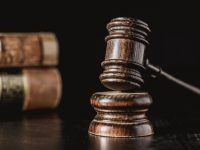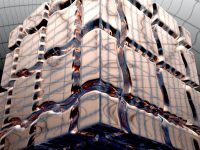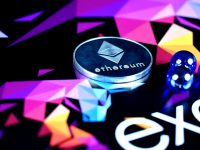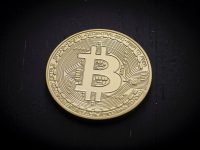 Overview of the Draft Report on the Cryptoasset System Working Group and Its Impact on Practice
Overview of the Draft Report on the Cryptoasset System Working Group and Its Impact on Practice


Japanese law |
Quantum computing |
Quantum Technology |
In recent years, quantum computers and other “quantum technologies” have rapidly been attracting attention. Specifically, quantum technology is expected to bring about high computing power and innovations in encryption technology that surpass conventional information technology, and various parties both in Japan and overseas are working on its practical application.
On the other hand, new issues are emerging, such as the risk of existing encryption being broken, and it is expected that there will be an increasing number of situations in which quantum technology will be required in national security, cybersecurity, and contract practice. This article focuses on quantum computers as a representative example of quantum technology, providing an overview of quantum computers and summarizing the main points of contention under current Japanese law.
| [Author Profile] Passed the bar exam in 2010. Professional experience includes system procurement and risk management at the Bank of Japan, with additional roles in the finance and international relations departments. Earned an MBA from INSEAD. Currently engaged in Web3, fintech, and other startup and corporate legal matters at So Sato Law Offices. Participated in the “Q-Quest” human resource development program under the Ministry of Education’s “Light and Quantum Leap Flagship Program,” and received an award in the program’s business contest. Since completion of the program, has been exploring opportunities in quantum business and gaining insights into quantum technology from a business perspective. |
| 1. National Security Legislation ・Foreign Exchange and Foreign Trade Act: With the revision of Cabinet Orders and Ministerial Ordinances in 2024 and 2025, quantum computers and related items will be subject to export and technology transfer permission. The restrictions are currently expanding, and manufacturers and others need to continue to pay attention to the restrictions. ・Economic Security Promotion Act: “Quantum information science” has been designated as a specific important technology and will be subject to research and development support through public-private councils and large-scale subsidies. In addition, quantum technology is not currently subject to the “patent non-disclosure system,” but there is a possibility that this will change in the future. ・Act on the Protection and Utilization of Critical Economic Security Information To be enacted in May 2025. It will establish a mechanism for protecting and utilizing information related to important infrastructure and important material supply chains. In relation to these, quantum technology-related information may also be subject to strict management as “important economic security information” (however, this will only be limited to government-held information). 2. Cybersecurity Legislation: Although the current law does not directly mention quantum technology or Post-Quantum Cryptography, if the threat of the spread of quantum computers increases, measures based on existing laws may be required. Movements have already begun at the guideline level, with the Financial Services Agency’s guidelines to specify attention to quantum computers in October 2024, and a request to major and regional banks to quickly switch to Post-Quantum Cryptography in May 2025. 3. Contractual issues regarding the use of quantum computers It may become necessary to stipulate in contracts the scope of liability and disclaimer clauses (probabilistic results, potential errors, etc.) that differ from those for classical computers in terms of the challenges and characteristics unique to quantum computing. Given the large scale and high cost of actual machines, cloud-based quantum computing is the general method of use, but there is no established standard for quality assurance (error rate, uptime, etc.). Companies are publishing various indicators of quality. |
Quantum computers use quantum properties such as “superposition”, “entanglement”, and “quantum tunneling” to perform calculations, which are expected to enable calculations that are significantly faster than conventional computers (known as classical computers) for certain problems.
| [Terminology] ・Quantum Superposition: Classical computer bits can only be in the “0” or “1” state, but quantum bits can be in the “0 and 1” state at the same time. For example, while a coin is spinning, it is not yet clear whether it will land on heads or tails. This superposition allows a quantum computer to process multiple calculation patterns in parallel with one quantum bit, achieving significantly faster calculations than classical computers in certain tasks. ・Quantum Entanglement: A phenomenon in which multiple quantum bits remain in linked states. For example, when two quantum bits are entangled, measuring one of them instantly determines the state of the other, regardless of distance. It is expected that this property can be used to link bits together to perform complex parallel calculations and realize highly secure quantum cryptography. ・Quantum Tunneling: A phenomenon in which quantum mechanical properties allow the “slip-through” of energy barriers that cannot be overcome in classical physics. In optimization problems, slipping through the “mountains” between the valleys rather than overcoming them makes it easier to reach the optimal solution, enabling efficient search. |
There are two main types of quantum computers: Gate-Based Quantum Computers and Quantum Annealers.
| Method | Basic principles/properties | Main applications | Representative companies |
| Gate-Based Quantum Computer | Using quantum “superposition” and “entanglement,” complex problems can be calculated in parallel for high-speed processing | Versatile quantum algorithms support a wide range of applications (e.g., chemical simulation and machine learning) | Google (superconductivity), Intel (semiconductors), IonQ (ion traps), PsiQuantum (light), QuEra Computing (neutral atoms) |
| Quantum Annealer | Using quantum “quantum tunneling” to explore the lowest energy state | Specializing in optimization problems (logistics route optimization, portfolio optimization, etc.) | D-Wave Systems |
The Gate-Based Quantum Computers are “general-purpose quantum computers” that can execute general-purpose quantum algorithms. Various methods are being researched, including superconductivity, semiconductors, ion traps, light, and neutral atoms. However, mainstream technology has not yet been established, and there are issues such as error correction before it can be put into practical use. In contrast, the Quantum Annealers are specialized for combinatorial optimization problems, and D-Wave Quantum Inc. provides commercial machines. In general, when people say “quantum computer,” they are often referring to the Gate-Based Quantum Computers, but the terms are used differently depending on the application and implementation technology.
| Method | How qubits work | Advantage | Issue | Representative companies, research institutes and universities |
| Superconducting approach | By passing microwaves through a superconducting circuit, two states of electric current or magnetic flux are converted into quantum bits. | High-speed gate operation * – Existing semiconductor manufacturing technology can be applied |
– Noise and errors are likely to occur – Extremely low temperature (close to absolute zero) environment required |
[Internet] Google, IBM, RIgetti [Japan] Fujitsu, NEC, RIKEN, National Institute of Advanced Industrial Science and Technoology |
| Semiconductor approach | Utilizing the state of electrons and spin in semiconductors such as silicon | – High compatibility with CMOS technology, making it easy to achieve large-scale integration in the future | – Quantum bits have a short coherence time, making them difficult to control | [Overseas] Intel, Equal1, Diraq, UNSW University of Sydney [Japan] Hitachi, RIKEN, National Institute of Advanced Industrial Science and Technology, bulueqat |
| Ion trap approach | Ions suspended in a vacuum are manipulated with a laser to turn their internal states into quantum bits | – Long coherence time and high gate accuracy | – The equipment tends to become large, making it difficult to arrange many quantum bits. | [Overseas] IonQ, Quantinuum, AQT, Oxford Ionics, Universal Quantum [Japan] RIKEN, National Institute of Advanced Industrial Science and Technology, Qubitcore |
| Photonic approach | Converting the state of a photon, such as its polarization or path, into a quantum bit | – Operates at room temperature – High compatibility with quantum communication and networks |
– Large-scale integration and error correction technologies are still in development – Photon source and detector are issues |
[Overseas] PsiQuantum, Xanadu [Japan] NTT, RIKEN, University of Tokyo, OptQC |
| Neutral Atom approach | Utilizing the internal state and configuration of neutral atoms cooled and aligned by laser | – It is relatively easy to arrange a large number of quantum bits, making it highly scalable. | – Gate operation is slow – High precision laser control is required |
[Overseas] Computing, Pasqal, Infleqtion, Atom [Japan] National Institute of Advanced Industrial Science and Technology, Institute for Molecular Science, Kyoto University, Yaqumo |
*Gate operation: A basic operation in which a quantum bit is given a certain stimulus (such as a microwave pulse or laser pulse) to change its state, and corresponds to the logical gates (AND/OR/NOT, etc.) of a classical computer. Examples include the X gate (which swaps the quantum bit’s 0 and 1) and the H (Hadamard) gate (which puts the quantum bit into a superposition state). The key to developing quantum hardware is to perform these gate operations quickly and with high precision.
On the other hand, Quantum Annealers are specialized for “combinatorial optimization” and cannot perform general-purpose calculations, but it is more advanced in practical use than Gate-Based Quantum Computers. In addition to the commercial machine provided by D-Wave, a Canadian company, “Quantum-Inspired Annealing” (Fixstars Amplify AE, Fujitsu Digital Annealer, etc.), which reproduces the behavior of classical computers in a pseudo-manner, has also been developed.
In January 2025, NVIDIA CEO Jensen Huang said that it would take about 20 years to realize a practical quantum computer, causing a sharp drop in quantum-related stocks in the United States. This is thought to be a forecast referring mainly to Gate-Based Quantum Computers, and at the time of writing this article (end of May 2025), many experts believe that it will take a considerable amount of time before they can be put to practical use. The main reason is that errors (decoherence due to external noise) that occur in the process of maintaining “superposition” and “entanglement” in Gate-Based Quantum Computers are serious, and advanced “error correction” technology is essential to resolve this. However, it is still thought that a considerable amount of time will be required to establish error correction technology, which is the background to the view that it will take 10 to 20 years.
However, research and development of various Gate-Based Quantum Computer approaches are accelerating around the world, and in Japan, large companies, startups, research institutes, and universities are competing to develop actual machines. In addition, commercial machines for the Quantum Annealers are already in widespread use, and an environment for online use has been established. In this way, quantum technology is not a “Matter of the distant future”, but technology that is currently being implemented in society.
| Field | Examples of usage scenarios |
| Finance and Economics | – Portfolio optimization (instantly calculate optimal allocations from a huge number of combinations) – Accelerating risk evaluation and price simulation |
| Logistics and Supply Chains | – Optimization of vehicle routes and warehouse layouts – Planning optimal transportation and movement routes during disasters and peak demand |
| Energy Smart Grid | – Optimization of power grid supply and demand – Real-time control taking into account fluctuations in renewable energy |
| Material Design and Drug Discovery | – Predict the properties of battery materials and candidate drug molecules with high accuracy using quantum chemical calculations |
| Healthcare Genomics | – Accelerating gene sequence analysis – High-precision prediction of protein structure |
| Weather and Climate Simulation | – High-resolution calculations of atmosphere-ocean models – Scenario evaluation of greenhouse gas reduction measures |
| Machine Learning and AI | – Quantum reinforcement learning to achieve high accuracy even with small data sets and to accelerate generative AI learning |
In the fields mentioned above, there are hopes for the realization of “quantum supremacy,” which would enable calculations that would take years on classical computers to be completed in a short time. However, quantum supremacy does not necessarily come with benefits; it also comes with risks to existing technologies. A typical example is the weakening of encryption technology, and there are concerns that quantum computers may be able to crack conventional public key cryptography.
| Cryptanalysis | If practical-scale quantum computers were to become available, currently widely used public key cryptography such as RSA and elliptic curve cryptography would be decrypted in a short time, threatening to instantly undermine the security of all aspects of society, including Internet communications and electronic payments. |
Current encryption technology is based on mathematical problems that are difficult to decrypt using classical computers, but when quantum computers become practical, they may be decrypted in a short time using techniques such as “Shor’s algorithm.” This puts public key cryptography, which is used in every aspect of business and daily life, at risk, and is also thought to affect blockchain, which is based on tamper resistance. Furthermore, a method known as the “Harvest Now, Decrypt Later attack” has been pointed out as a risk of intercepting and storing data at present, and then decrypting it all at once in the future when quantum computers become practical. For this reason, there is an urgent need to transition to “Post-Quantum Cryptography (PQC),” which is difficult to decrypt even with a quantum computer. In the United States, the National Institute of Standards and Technology (NIST) selected several PQCs as candidates for standardization in August 2024, and has continued to consider them since then. In Japan, CRYPTREC (Cryptographic Technology Evaluation Committee), which evaluates and monitors cryptographic technologies, will publish the “CRYPTREC Cryptographic Technology Guidelines (Post-Quantum Cryptography) 2024 Edition” at the end of March 2025.1, which provides technical explanations, evaluations, and implementation guidance for various PQCs. Since encryption technology is the foundation of all services, each business operator needs to pay close attention to the standardization trends of these PQCs and begin preparations early.
Overseas, major countries are making large-scale investments in quantum technology, and some countries are also focusing on developing legal infrastructure. Japan must also keep a close eye on these trends and strive to balance its international competitiveness with issues such as cybersecurity and national security.
| Country | Trends |
| US | In 2018, the federal government passed the National Quantum Initiative Act, which allows the federal government to work to promote quantum R&D and build a system for developing human resources. |
| EU | The EU has launched a large-scale project worth 1 billion euros called the “Quantum Flagship” and is leading research and development into quantum computers and quantum communications. |
| China | The nation is investing heavily in research and development of quantum communications and quantum computers, with a particular emphasis on applications in the military and security fields. |
In Japan, at the time of writing this article (end of May 2025), there is no specific law targeting quantum technology. Looking at other cutting-edge technology fields, various regulations have already been imposed on blockchain (crypto assets, etc.), and in May 2025, the Act on Promotion of Research, Development and Utilization of AI-Related Technologies was passed with the aim of promoting utilization and reducing risks.2 3 It is possible that a dedicated law for quantum technology will be enacted in the future, but for now, it is necessary to consider the applicability of existing laws for each use case. Specifically, we will review (1) how national security-related laws relate to export control and development support for quantum equipment and technology, and (2) how cybersecurity legislation will handle the impact of quantum technology on existing cryptography. Furthermore, (3) when providing and using quantum services, new issues will arise that need to be considered, such as contractual allocation of responsibility and exemptions, and quality assurance. We will provide an overview of the legal framework regarding these issues.
The United States and China are investing heavily in quantum technology on a national scale, as it is directly linked to national security in terms of invalidating existing encryption technology and making communications difficult to intercept. In the United States, the National Quantum Initiative Act was enacted in 2018 with the aim of maintaining and strengthening both economic competitiveness and national security. A quantum R&D system was established through collaboration between universities, companies, and research institutes and large-scale budget investment. Japan does not have a law specifically related to quantum, but the advanced quantum field may be subject to existing security-related laws (Foreign Exchange and Foreign Trade Act, Economic Security Promotion Act, and Important Economic Security Information Protection and Utilization Act). We will consider how research and development of quantum computing and quantum sensors can be regulated and supported from a security perspective within the framework of these existing laws.
The Foreign Exchange and Foreign Trade Act is a law that controls the overseas provision of goods and technology and investment from abroad from the perspective of national security. Specifically, it stipulates 1) export restrictions (to prevent overseas outflow), 2) restrictions on service transactions (including the provision of intangible technology), and 3) restrictions on inward direct investment (prior notification for investment and acquisition by foreign capital).
Quantum technology is one of the areas in which there is concern about the risk of goods and technology being leaked overseas. For this reason, a revision to the Cabinet Order and Ministerial Ordinance in September 2024 will make quantum computers subject to export controls, and permission will be required for exports to all regions.4 Furthermore, the amendments coming into force on May 28, 2025 will similarly add key technologies and materials essential to practical-scale quantum computers as targets for regulation.5 6 In addition, the transfer of technology regarding quantum computers and related items that are subject to export controls is also subject to regulations.7
| Regulated (as of the end of May 2025) | Official Location |
| Quantum computing | All regions |
| Quantum computer-related items: Cryogenic refrigerators Cryogenic amplifiers Cryogenic wafer probers Isotope separation Silicon/germanium substrates and raw materials |
All regions |
Given that export and technology transfer restrictions under the Foreign Exchange and Foreign Trade Act are currently expanding, quantum-related companies will need to establish a system that allows them to constantly check whether their products and technologies are subject to restrictions.
The Economic Security Promotion Act (“Act on Promoting Security through Integrated Economic Measures”) enacted in 2022 aims to support the technology and materials of domestic companies and research institutions and strengthen national security from an economic perspective. The specific mechanism is based on the following four pillars. These measures8hope to reduce risks through public support and information sharing.
In the third pillar- advanced technology support, “quantum information science” has been designated as a specific important technology.9 Research and development will be promoted and utilized through the provision of financial support, the establishment of a council to provide support through public-private partnerships, and the outsourcing of research and study work.
In addition, the fourth pillar, the patent non-disclosure system, allows for measures such as withholding the disclosure of inventions that pose security risks and prohibiting foreign applications. At the time of writing this article (end of May 2025), quantum computers and quantum cryptography communication have not been designated as “specific technology fields” that are subject to this system. However, given the intent of the law, the assumption can be made that they may be designated in the future, so it is a system that developers should be aware of.
On May 16, 2025, the Act on Protection and Utilization of Important Economic and Security Information came into force. Previously, the Act on the Protection of Specially Designated Secrets was a security clearance system for defense, diplomacy, terrorism, and espionage-related information.10, but this Act aims to expand into economic security, establishing a system for protecting and utilizing information related to important economic infrastructure.
The Act first defines the systems for providing critical infrastructure and the supply chains of important materials as “critical economic infrastructure” (Article 2, Paragraph 3). It then defines four types of information as “critical economic infrastructure protection information,” including measures to protect the critical economic infrastructure, and information on the vulnerabilities of the critical economic infrastructure and innovative technologies related to security (Article 2, Paragraph 4). Furthermore, among the information that falls under the category of critical economic infrastructure protection information, there is a mechanism by which the government may designate information that is not publicly known and meets the requirement of confidentiality as “important economic security information” (Article 3, Paragraph 1).

The purpose of this law is to both “protect” and “utilize” designated important economic and security information. Specifically, to properly handle economic information held by the government that is important for national security, the law stipulates the requirements for businesses that are permitted to provide information designated as important economic and security information, as well as the methods of evaluating the suitability of individuals who handle the information. Note that the designation is strictly limited to government-held information, and technical information independently developed by private companies is not unilaterally designated and its handling is not restricted.
As mentioned in (i), the Act on the Protection and Utilization of Important Economic and Security Information covers four types of information related to the protection of important economic bases (critical infrastructure and supply chains of important materials). Specifically, it includes information directly related to national security, such as measures, plans, and research to protect infrastructure from external threats, infrastructure vulnerabilities, and innovative technologies. The infrastructure and materials covered are to be determined by reference to those stipulated in the Economic Security Promotion Act and the “Action Plan for Cybersecurity of Critical Infrastructure.”11This includes infrastructure such as electricity, gas, water, communications, transportation, logistics, finance, chemicals, and medicine, as well as important supplies such as semiconductors and advanced electronic components.
Quantum technology, such as quantum computers that pose a risk of breaking existing encryption, and quantum cryptography communication that increases security, is highly likely to fall under the category of information relating to the protection of critical economic infrastructure mentioned above, and it is quite possible that it will be designated as important economic and security information in the future. However, to repeat what was stated in (i), only government-held information can actually be designated as important economic and security information, and technologies developed in-house by private companies are not unilaterally designated as such.
In addition to national security, quantum technology is also an issue in Japanese law in relation to cybersecurity. As mentioned in II 3., the development of quantum computers poses the risk that conventional encryption technologies may be decrypted.
In Japan, the Basic Act on Cybersecurity imposes the responsibility to ensure security on the state and businesses, and the Personal Information Protection Act requires the appropriate management of personal data. At the time of writing this article (end of May 2025), these laws do not specifically mention quantum technology or Post-Quantum Cryptography (PQC). However, if the spread of quantum computers compromises existing cryptography and increases security risks, it is possible that necessary measures will be required to be taken based on these laws even if they are not explicitly stated in the articles.
In response to this, quantum technology has already been mentioned at the guideline level. The Financial Services Agency has published the “Guidelines on Cybersecurity in the Financial Sector” for financial institutions.12” (published on October 4, 2024). It clearly states that when collecting and analyzing threat and vulnerability information, “collect information while paying attention to the circumstances surrounding the organization, such as new technologies (AI, quantum computers , etc.), geopolitical trends, disinformation, and industry trends” as “matters that it is desirable to address.”
Furthermore, according to the Nihon Keizai Shimbun (dated May 14, 2025)13, the Financial Services Agency is calling on major and regional banks to immediately begin preparations to transition to PQC. It appears that the agency is calling for an immediate response, as PQC compliance will require years of system modifications and other costs.
When users use quantum computers, the question of how to deal with possible errors and fluctuations in the quantum computing results in a contract may arise. Such questions may arise due to the challenges and characteristics unique to quantum computing.
As mentioned above, errors that occur during calculations are a major issue with Gate-Based Quantum Computers. In addition, some quantum algorithms are run repeatedly to extract the statistically best solution, meaning that the same input does not always produce the same output. The Quantum Annealers may also produce different solutions each time it is executed due to the nature of its principle (probabilistically searching for solutions with low energy), hardware noise, thermal noise, etc. In addition, large-scale calculations that involve quantum supremacy are difficult to reproduce and verify on classical computers.14, meaning one cannot fully guarantee the correctness of the output.
For these reasons, there is a risk that the results of quantum computing will contain errors and fluctuations, which will affect subsequent predictions and simulations. As the number of services using quantum computers increases, it may become necessary to clarify the scope of responsibility for hardware (quantum processors), software (algorithms), user circuits and data, and to introduce clauses that differ from traditional IT contracts, such as disclaimer clauses that assume that results are probabilistic and that there are potential errors.
Because the actual equipment for both the Gate-Based Quantum Computers and the Quantum Annealers are large-scale and expensive, cloud-based quantum computing, in which equipment provided by hardware vendors is used via the cloud, is expected to become the standard method of use for the time being.
In conventional cloud computing, a certain level of uptime is guaranteed under a service level agreement (SLA), but in the case of cloud-based quantum computing, the question of what kind of quality guarantees (error rate, uptime, etc.) should be made can become an issue. For example, IBM Quantum Platform (Gate-Based Quantum Computer), D-Wave Leap (Quantum Annealer), and Amazon Braket (which handles multiple external Gate-Based Quantum Computers and Quantum Annealers via API) each publish various indicators (gate error rate, coherence time, time required to process a job, etc.), but it seems that a standard approach has not yet been established.
Disclaimer
The contents of this document have not been verified by the relevant authorities and are merely a description of arguments that are reasonably considered in accordance with the law. In addition, they represent only our current views and may be subject to change.
This is just a summary for the blog. If you need legal advice for a specific case, please consult a lawyer.
 Overview of the Draft Report on the Cryptoasset System Working Group and Its Impact on Practice
Overview of the Draft Report on the Cryptoasset System Working Group and Its Impact on Practice
 M&A of Cryptoasset Exchange Service Providers – Regulatory Specificities
M&A of Cryptoasset Exchange Service Providers – Regulatory Specificities
 “Are AI police and AI judges on the way?” – The turning point between a surveillance society and a fair society
“Are AI police and AI judges on the way?” – The turning point between a surveillance society and a fair society
 Sustainability and Web3: Can Web3 become a sustainable social infrastructure?
Sustainability and Web3: Can Web3 become a sustainable social infrastructure?
 Digital Asset Treasury Strategies and Legal Issues – Practical Considerations for Japanese Companies
Digital Asset Treasury Strategies and Legal Issues – Practical Considerations for Japanese Companies
 SEC ICO Warning (Dec 2017)
SEC ICO Warning (Dec 2017)
 Initial Coin Offerings (ICO) under Japanese laws
Initial Coin Offerings (ICO) under Japanese laws
 Guidance Note on the Japanese Virtual Currency Legislation
Guidance Note on the Japanese Virtual Currency Legislation
 New Crypto Regulations of Japan
New Crypto Regulations of Japan
 Impacts upon enforcement of the Act concerning Work Style Reform
Impacts upon enforcement of the Act concerning Work Style Reform
 Stable Coins under Japanese Laws
Stable Coins under Japanese Laws
 Libra, Maker’s Dai and other Stable Coins under Japanese Laws
Libra, Maker’s Dai and other Stable Coins under Japanese Laws
 Security Token Offerings in Japan
Security Token Offerings in Japan